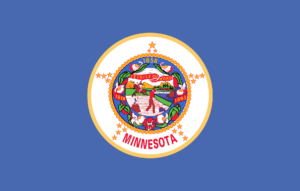Modern technology has made remote work more common than ever. The convenience and accessibility of working from home is great for employees, and employers hiring out of state employees in Minnesota is a benefit with expanding talent search across the country. However, rules about employment policies, taxation and insurance coverage can vary dramatically from state to state. This can create complex issues.
To comply with Minnesota’s state laws and employment standards, you will need to establish an economic nexus within the state, register for tax purposes and comply with individual state employment standards.
While hiring out-of-state enables employers to find the right worker for every position, it’s easy to run afoul of the law. If you don’t take the time to register with each state—and ensure you’re complying with each state-specific law and policy—you could be liable for hefty fines and fees. Here’s an overview of out-of-state hiring challenges, and how SixFifty can make it easier.

Scenario 1: Employee works from home in another state
When your best employee has a compelling reason to move out of state, such as caring for their aging parents, finding affordable housing or supporting a partner’s job move, they’re no longer forced to quit. When an employee moves to a new location, they can work remotely. Unless your company regularly does business in Minnesota, you will need to establish an economic nexus there. Similarly, your employment policies and procedures may not be fully compliant.
Scenario 2: Hiring out-of-state employees in Minnesota
Alternatively, employers may choose to hire employees already living in Minnesota. Even if your company is headquartered in California, employees living and working in Minnesota are subject to state income tax withholding and state employment laws. Employers must register in each new state, and review their policies to ensure state law compliance.
Multistate Employer Registration Factors to Consider
Failing to comply with state-specific standards can be a liability issue—but researching and fulfilling all of your employer obligations can be time consuming and expensive. This can be a barrier to hiring the best worker for the job.
SixFifty has identified five key areas of focus when hiring out-of-state employees. Our multistate employer tools can simplify the process, so you can quickly onboard new hires and retain people who move away.
1. Minnesota Employment Registration
First, you’ll need to establish an economic nexus (in this case, hiring an employee in the state) for your business within Minnesota. Employers are required to register their company with the state, report the new hire to the Department of Labor within 20 days and obtain or update their workers’ compensation and unemployment insurance policies.
- Obtain a registered agent
- Register to do business in Minnesota
- Report new hire to the Minnesota New Hire Reporting Center
- Register for unemployment insurance
- Report unemployment insurance account to payroll provider
- Obtain workers’ compensation coverage or update the policy
2. Minnesota Tax Registration
With an economic nexus comes state taxation. Employers must ensure that their employees submit the required state tax withholding forms. You’ll also need to register for a sales tax license or permit, and set up an income tax withholding account.
- Register for income tax withholding account
- Obtain the completed state income tax withholding form from the employee
- Register for a sales tax license or permit
3. Minnesota Employment Policies
While the federal government has set certain employment standards for every state, Minnesota goes further. Every employer is required to include Minnesota’s 15 additional state policies in their handbooks. Practically speaking, this means an employer needs to review and update their employee handbook each time they hire in a new state.
- Review employee handbook for compliance
- Update policies or add new leave policies as needed
4. Required Employment Policies (2025)
- Bone Marrow Donor Leave (20 Employees)
- Civil Air Patrol Leave (20 Employees)
- Crime Victim Leave
- Domestic Violence Leave
- Election Judge Leave
- Jury Duty Leave
- Meal and Rest Breaks
- Military Death/Injury Leave
- Minimum Wage Rights (St. Paul, Protected Activity Policy)
- Paid Sick Leave (for Bloomington, Duluth (5 Employees), Minneapolis, and St. Paul)
- Political Activity Leave (Voting and Election Official Leave)
- Pregnancy and Parental Leave (21 Employees)
- School Activity Leave
- Voting Leave
- Wage Disclosure Protection (Protected Activity Policy)
- Whistleblower
- Witness Duty Leave
5. Minnesota Employment Implications
Minnesota’s minimum wage, non-complete rules, overtime policies, payment policies and insurance coverage may vary from your home state. COVID-19 protocols can also vary significantly. Employers need to review their policies to ensure that their out-of-state employee policies comply with Minnesota law, and make any necessary changes.
- Ensure non-compete provisions comply with Minnesota law
- Confirm the employee is paid at least the minimum wage
- Review the applicable overtime laws
- Confirm the payroll practices meet the payment frequency standards in Minnesota
- Consider whether insurance extends coverage to employees in Minnesota
- Consider COVID-19 laws that affect the employee
6. Minnesota Signage
Minnesota employers are required to post or distribute five different types of signage. Duluth, Minneapolis and St. Paul require additional signs. Minnesota has not made any provisions about signage for exclusively remote workers, but generally, making the signs available in an easily accessible web folder, on a website or in company communication channels will satisfy this requirement.
- Post or distribute required signage
Simplify Multistate Compliance with SixFifty
The process of maintaining compliance can be complex and extremely nuanced for companies unfamiliar with Minnesota employment laws and standards. It’s why SixFifty has compiled an extremely useful tool for businesses hiring out-of-state employees in Minnesota. To simplify the process of hiring out-of-state employees in Minnesota or supporting remote employees on-the-move, check out our 50 State Hiring Kit.
Looking for requirements for a different state? View our interactive map for hiring out-of-state employee requirements by state.